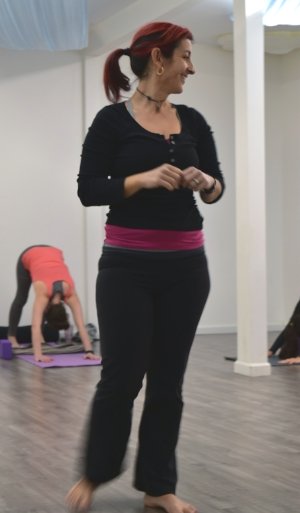Quality Teachers are the Cornerstone of a Successful Prenatal Yoga Program
By Jeanna Lurie
Wearing the hat of Program Manager at Blossom for the last decade has given me a unique perspective on creating and maintaining a quality, well-known prenatal yoga program in Silicon Valley. The job requires me to receive feedback from clientele, analyze attendance patterns, audit teachers with diverse backgrounds, and stay on top of trends in the industry. I’ve learned that studio atmosphere- fostering a warm, welcoming community, in addition to aesthetics- is important. A full schedule with diverse offerings to meet the needs of the busy Silicon Valley lifestyle tops the list, as well. And, not surprisingly, the number one element in a booming prenatal yoga program is quality teachers.
So what makes a quality prenatal yoga teacher? First and foremost, a warm personality that puts mothers at ease when they walk through the door. Market research has shown that taking that first step into a yoga studio is intimidating for many beginners, and many women try yoga for the first time when they become pregnant. When the teacher greets them, introduces them to the practice, and demonstrates that they are in a safe place, mothers are able to focus on their practice. At Blossom, it’s pretty clear that many of our clientele deeply connect with our prenatal yoga instructors. We often receive birth stories in our inbox that express gratitude to a particular teacher and new moms drop in looking to introduce their babies to their teachers.
A strong understanding of the art and science of yoga and how it applies to the expectant yogi is critical as well. This point may seem obvious, but many don’t understand that yoga is more than just a set of physical postures. An exceptional prenatal yoga instructor understands the eight limbs of yoga and can weave them into her teachings in a way that is relatable to mothers-to-be. This allows her students to go beyond the physical practice to prepare emotionally, physically, and spiritually for their births and the journey of parenting that follows.
And while yoga is not just a physical practice, most moms come to prenatal yoga to deal with the many common discomforts of pregnancy. Prenatal yoga instructors must understand the physical experience and anatomy of pregnancy and provide options for addressing the sensations they bring. This includes a deep understanding of the pelvic floor, offering practices and guidance to provide stability to this area that concerns most new moms. (Hint: the answer is NOT kegels!)
The community provided by an high-caliber prenatal yoga class naturally invites discussion about all things pregnancy, birth, and early parenting, whether during the class or afterwards. Prenatal yoga teachers must have knowledge regarding maternity care options in their area, the common protocols of labor and delivery, connections to complementary practitioners for appropriate referrals, and know where to find answers to the many questions that arise during and after class. Furthermore, she needs to know how to address these issues without judgment and facilitate a conversation that is respectful of all views, as birth-related topics can often be sensitive or emotionally triggering. It’s easy to make a mistake in this department, and a top-rate instructor humbly apologizes when necessary and learns from the mistake.
When I hire a new yoga instructor at Blossom, these are the qualities I am looking for. The ongoing need for well-trained teachers is one of the reasons Hillary and I started Lotus Blossom Prenatal Yoga Teacher Training, encompassing all of the elements necessary to foster a yogi into a teacher with these essential qualities. Many of Lotus Blossom’s graduates, feeling completely confident to lead a pre (or post) natal class after completing the program, have gone on to teach at Blossom- mothers in our community frequently express how much they love practicing with them!

